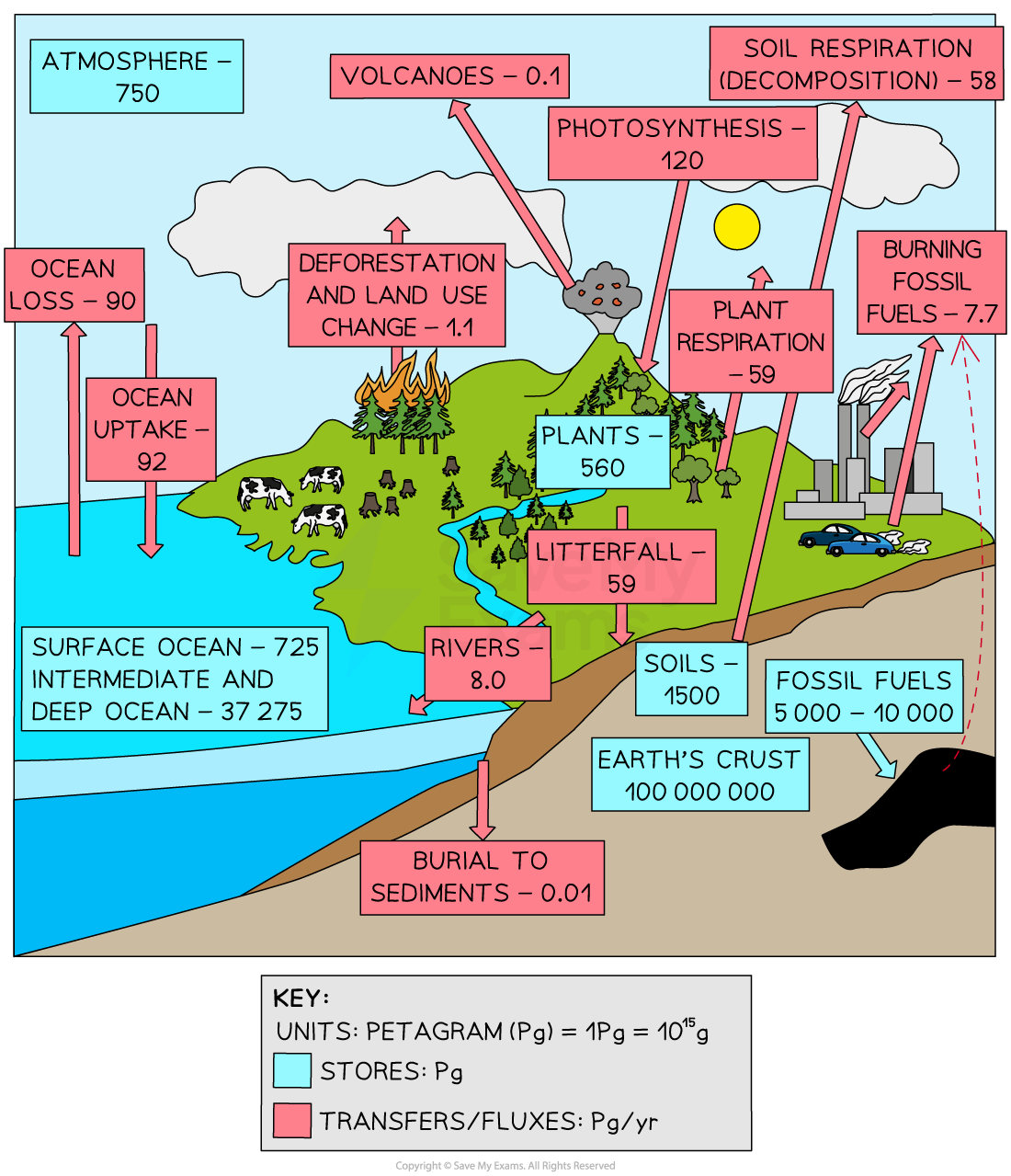The Carbon Budget
- The carbon budget is the amount of carbon stored and transferred within the carbon cycle on global or local scale
- The budget includes carbon emissions by various processes (i.e. burning fossil fuels) against natural or human sequestration
- Calculated using a carbon footprint calculator and is defined as:
the total amount of greenhouse gases produced (directly and indirectly) to support human activities, and expressed in gigatonnes of carbon dioxide equivalent per year (GtC/yr)
- One GtC is a billion (1,000,000,000) tonnes and can also be referred to as a petagram (Pg)

Global carbon budget showing the amount of carbon stored and circulating through the system

